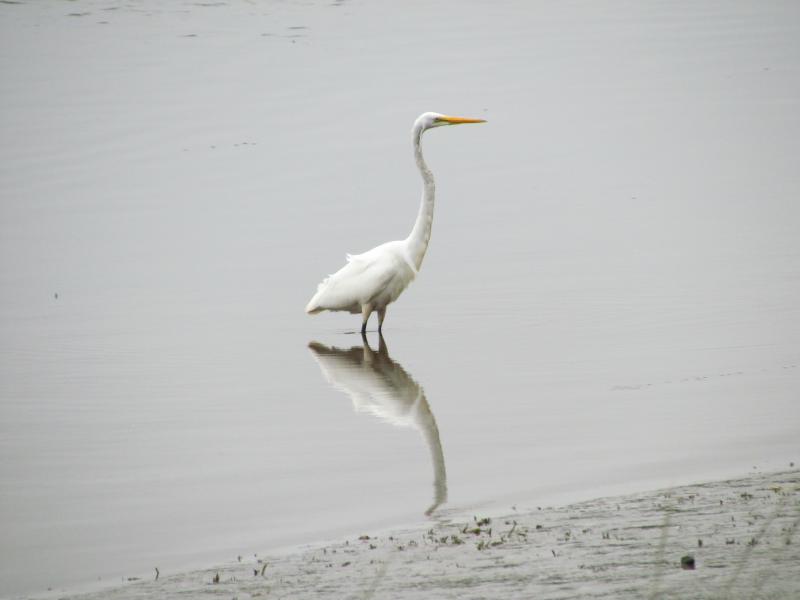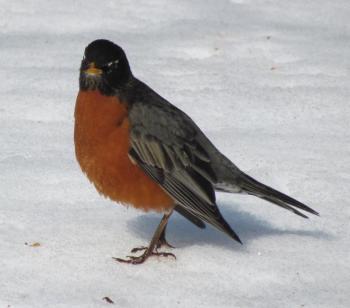Birds are among the most popular and beloved of wild animals. Sure, moose are majestic. Deer are popular to different groups of people for different reasons. Some people find foxes beautiful (or at least the kits cute). Some love skunks—one of our good friends and Cornell colleagues once raised an orphaned one. Generally speaking, insects are not going to rank high in the favorite critters category (well…maybe butterflies). And spiders? For most people, you may well just say “mouse” or “snake” and watch them run.
Birds, on the other hand, are undeniably fascinating to the vast majority of people. There’s good reason why there are enough bird enthusiasts in the U.S. alone to support a multi-billion-dollar birdseed and bird feeder industry. Studies by the U.S. government have found that there are 40-50 million people in the U.S. who say they watch birds either in their backyards or at other locations. For evidence, take a walk around the average suburban neighborhood and count how many homes have bird feeders, bird houses, or bird baths. You’ll be amazed at how prevalent they are.
Of course, we have our own informal gauge of the number of people who are interested in birds. At any gathering where people know we know something about birds, we are peppered with questions about them. Case in point: last week’s column. In fact, even as we’re working on this piece, we’ve just responded to a question from a reader of this column!
Why are birds so popular?
Here are the five top reasons why, in our opinion, people are so intrigued by birds.
5) Birds Do Interesting Things
Billions of birds do one of the most mind-blowing things on the planet: They travel thousands of miles each fall and spring in migration, which in itself is astounding. But they also arrive back at the same places across the hemisphere year after year! Some birds have elaborate, even bizarre (to us), courtship displays—the drumming of the ruffed grouse, the sky dance of the American woodcock, or the elaborate, mind-blowing bowers of the bowerbird (Google it sometime!). They build nests—have you ever stopped to look closely at those miraculous little cups during a mid-winter walk when you see an old nest in a bare bush? We bet you have! Birds are so interesting that ornithologists have barely scratched the surface of bird behavior.
4) Birds Are Colorful
We humans love bright colors—especially the vibrant colorful plumages of birds. Few people are unmoved by the sight of a bright red male cardinal, especially as we see them in Maine against the stark white of a snow-covered landscape. Eye-popping orange Baltimore orioles, deep blue indigo buntings, and all the yellows, oranges, reds, and blues of warblers are a constant feast for the eyes. No wonder that so many birds are named for their colors: blue jay, indigo bunting, yellow warbler, cerulean warbler, for example.
3) Birds Make Beautiful Sounds
Just as we enjoy their colors, we humans revel in our enjoyment of the songs and calls of birds. Some are recognizable to just about everyone—the yelping cry of a gull, the echoing yodel of a loon, the cooing of a pigeon, the hoarse “caw” of a crow, the loud “cheer-cheer-cheer” of the cardinal. Some bird songs provide the background sound of summer even if a person doesn’t know the identity of the singer. The whistled “Old Sam Peabody, Peabody, Peabody” is familiar song across much of Maine even though there are many who don’t know that it is the singer is a white-throated sparrow.
3) Birds Are Easy to See
Sure, there are some birds for which this isn’t true, but most are visible to the naked eye, if you are paying attention. Everybody, it seems, knows and loves great blue herons (see our recent column. Ditto for egrets, eagles, hawks, and gulls (OK, but gulls are at least recognized!). A great many smaller birds also don’t particularly try to conceal their presence and in fact live easily among people—robins, pigeons, mourning doves, song sparrows, chickadees, starlings. Others come obligingly to bird feeders where we can easily see them, including even birds like woodpeckers and finches
1) Birds Are Everywhere!
Downtown New York City. Dallas suburbs. Rural farmlands of the County. Even thousands of miles out to sea—birds live there. They live In every place in the world. You can look out the window of any building large, small, tall, or short, and you will be able to see birds. This is because there are so many species of birds—450+ in Maine, 950+ in the U.S., 10,000+ in the world—and, just like the places they live, each one is different from the next.
If only we had more space. Our list is just getting started!
Jeffrey V. Wells, Ph.D., is a Fellow of the Cornell Lab of Ornithology and Vice President of Boreal Conservation for National Audubon. Dr. Wells is one of the nation's leading bird experts and conservation biologists and author of the “Birder’s Conservation Handbook.” His grandfather, the late John Chase, was a columnist for the Boothbay Register for many years. Allison Childs Wells, formerly of the Cornell Lab of Ornithology, is a senior director at the Natural Resources Council of Maine, a nonprofit membership organization working statewide to protect the nature of Maine. Both are widely published natural history writers and are the authors of the popular books, “Maine’s Favorite Birds” (Tilbury House) and “Birds of Aruba, Bonaire, and Curaçao: A Site and Field Guide,” (Cornell University Press).






























